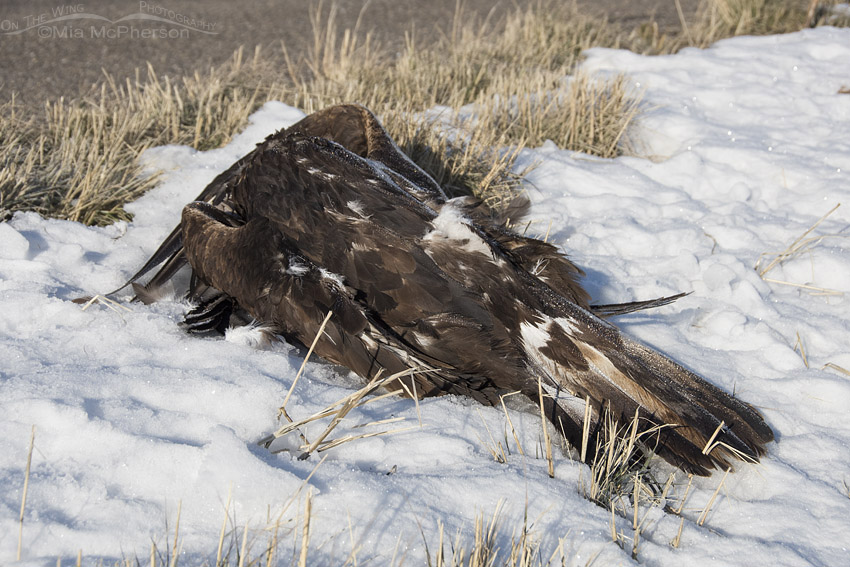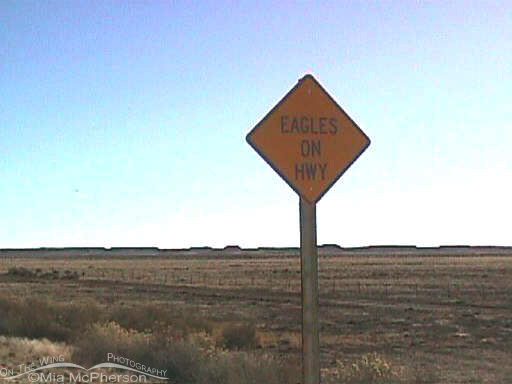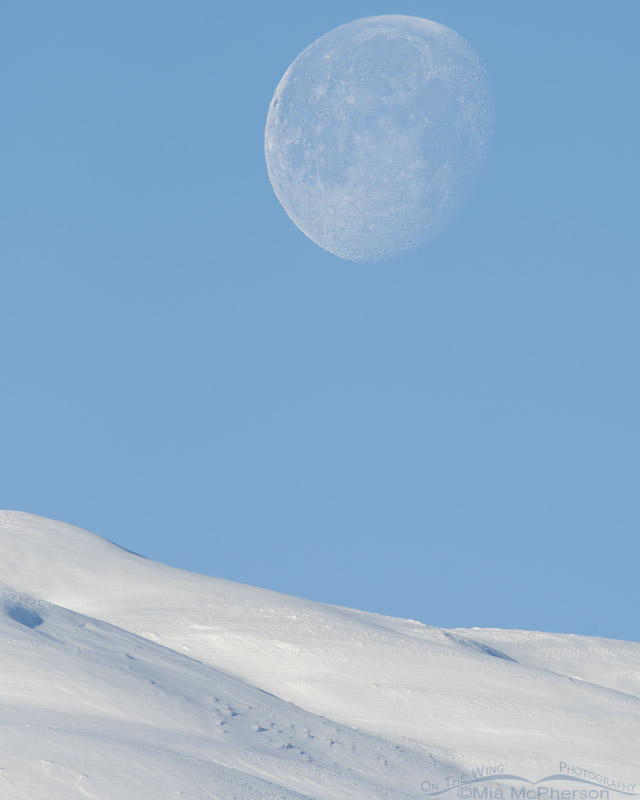 Snow-covered Promontory Mountains and the descending Moon – Nikon D500, f7.1, 1/1000, ISO 320, +1.0 EV, Nikkor 500mm VR with 1.4x TC, natural light
Snow-covered Promontory Mountains and the descending Moon – Nikon D500, f7.1, 1/1000, ISO 320, +1.0 EV, Nikkor 500mm VR with 1.4x TC, natural light
When I am out photographing birds I often see some of the most amazing birds, wildlife and scenery here in Utah but there are times I see things I can’t un-see, things that make me feel sad or that I have had my heart punched.
Last week while photographing birds in Box Elder County in northern Utah the countryside was blanketed in snow, the moon was setting against a clear blue sky and I couldn’t resist taking photos of the moon as it was setting. I wanted to be able to see the craters on the moon so I photographed it using my 500mm and D500. I had to stitch two photos together to create this composite because the it was just too tight when I photographed with my camera in a horizontal position to get some of the mountains and the moon in it. So I took one image with the moon below the top of the frame and one where the moon was clipped but some of the mountains showed.
 Deceased Golden Eagle – Nikon D810, f7.1, 1/1600, ISO 320, +0.3 EV, Nikkor 18-200mm VR at 56mm, natural light
Deceased Golden Eagle – Nikon D810, f7.1, 1/1600, ISO 320, +0.3 EV, Nikkor 18-200mm VR at 56mm, natural light
Further down the road I spotted a dark lump on the shoulder and my heart sank because I immediately realized that the lump was a deceased Golden Eagle. I pointed the bird out as soon as I could. The Golden Eagle was covered in frost so I knew it had been dead for awhile and I also knew that the most likely cause of its death was a vehicle strike.
Golden Eagles do feed on road killed birds and animals and sadly they are often struck by cars and other vehicles driving by them when they lift off from the shoulder of the road because they are startled or flying after prey and crossing over the roads.
The road where the eagle was killed isn’t heavily used but there is some traffic moving fast enough that if an eagle lifted off they might not see it before it is too late.
Out here in the western U.S. there are road signs where numbers of known eagle strikes have occurred where “Eagles on HWY” signs are put up to warn drivers of the possibility of vehicle and eagle strikes.
 EAGLES ON HWY ©Mia McPherson (Really, really old Sony Mavica photo)
EAGLES ON HWY ©Mia McPherson (Really, really old Sony Mavica photo)
I took a few photos of the eagle on my D810 and my cell phone and then contacted my friend Neil Paprocki who works for HawkWatch International via text on my phone to see if someone could come to pick up the eagle. Then I dropped a pin on Google maps and sent the coordinates to Neil to aid in relocating the eagle later.
It is against Federal laws for ordinary folks like myself to be in possession of Bald and Golden Eagle carcasses or feathers which is why I contacted Neil. In fact collecting the feathers of any bird covered by the MBTA is illegal.
The Migratory Bird Treaty Act makes it illegal for anyone to take, possess, import, export, transport, sell, purchase, barter, or offer for sale, purchase, or barter, any migratory bird, or the parts, nests, or eggs of such a bird except under the terms of a valid permit issued pursuant to Federal regulations.
Neil was able to get out the next day to pick up the eagle to be sent to the state lab for lead and other heavy metal testing. Bald and Golden Eagles can be poisoned by lead from spent shot and bullet fragments in gut piles or bird and animal carcasses so when an deceased eagle is found it is an opportunity to test for lead exposure.
For a couple of days I couldn’t get this eagle out of my mind in much the same way as I still see birds I have helped rescue from barbed wire fences or the ones I couldn’t rescue because they were already dead.
Dying is part of the cycle of life though and even though I don’t like seeing dead birds I realize I have to accept it. Plus something may be learned from this Golden Eagle’s demise.
 Moon setting over the snow-covered Promontory Mountains – Nikon D500, f7.1, 1/1000, ISO 320, +1.0 EV, Nikkor 500mm VR with 1.4x TC, natural light
Moon setting over the snow-covered Promontory Mountains – Nikon D500, f7.1, 1/1000, ISO 320, +1.0 EV, Nikkor 500mm VR with 1.4x TC, natural light
While it is true that not every thing I see while out photographing birds, wildlife and nature is pleasant I personally feel an obligation as a citizen of this planet and citizen scientist to report on some of the distressing things I see especially when it involves humans or human activity. Where there is beauty there can also be sadness.
Life can be sad but it is always good.
Mia
Click here to see more of my Golden Eagle photos plus facts and information about this species.


Love those moon images. In the distant past it actually did appear that close. “While our two celestial bodies remain locked in orbit, the moon is slowly — very slowly — inching away from Earth, at a rate of about 3.8 cm a year. Right now the moon is more than 238,000 miles from Earth, but when it formed, it was just 14,000 miles away.” (Time Magazine).
I brake for birds and other animals that cross my path. Slowing down does help but seems most folks are always in a big hurry. Interesting post.
One more interesting fact from NASA to give us a better feel for the size: *If Earth was the size of a basketball, the moon would be the size of a tennis ball. This can give you an idea of how they compare.
Road kill makes my heart ache. And we see too much of it.
Love moon shot…golden eagle, not so much! So many eagles are killed by cars. Few drivers seem to respect signs warning of eagles on the road..speeding along as fast as usual. Many of these magnificent birds and other raptors are killed by cars as a result. Many eagles are also killed by trains, when they are hit while feeding on the bodies of animals like rabbits and deer lying on or next to the tracks where they were hit by trains. Sad!!!
Incredible moon photos… we had a lot of birds hit by cars in napa – barn owls, egrets… it is very distressing
Beautiful moon shot. Sad to see a beautiful eagle killed like that.
Beautiful moon photos!
Soooo sad about the Eagle. Glad you were there to report it.
Interesting column.. your words ring true. Beautiful moon shot.